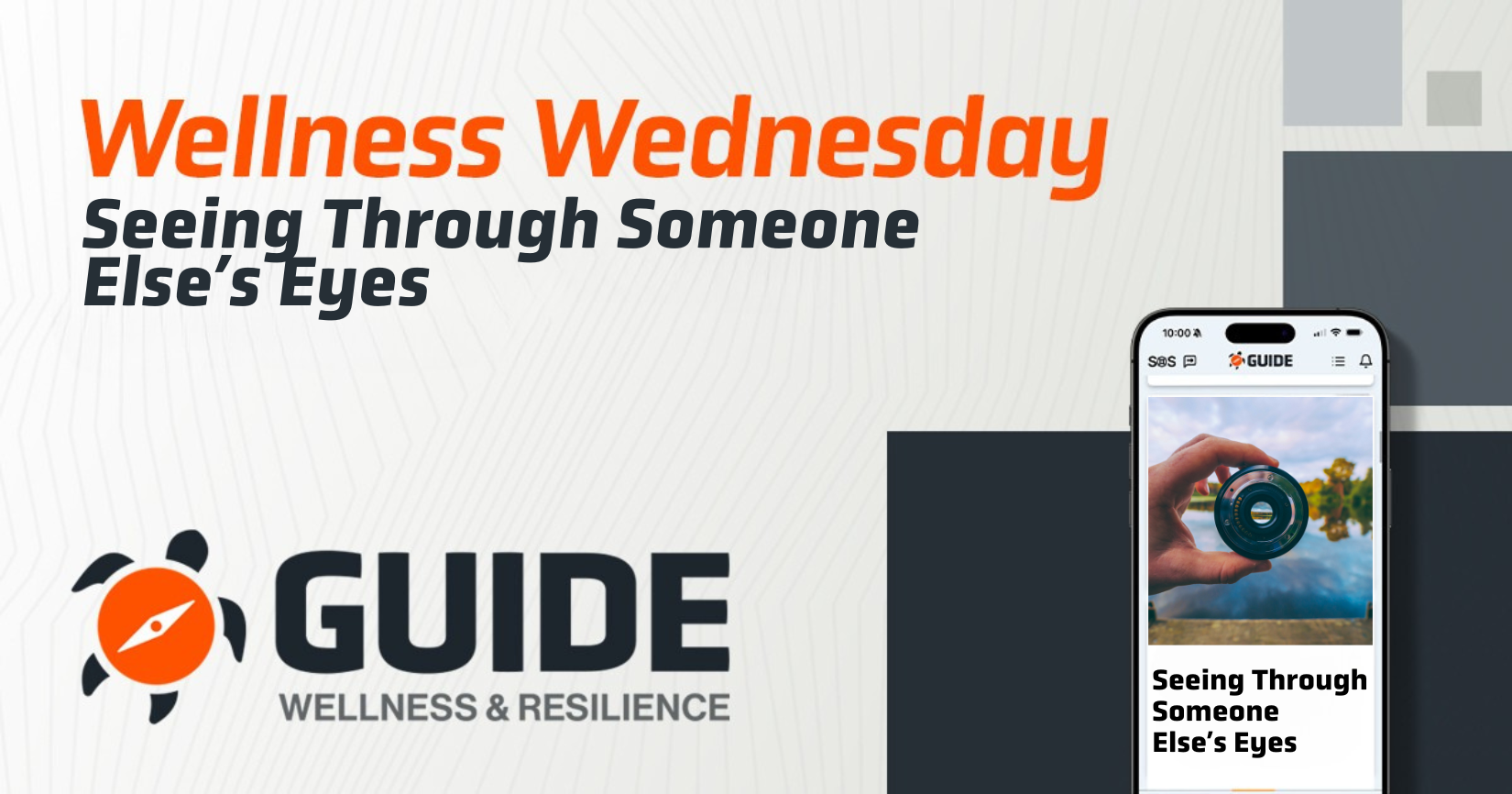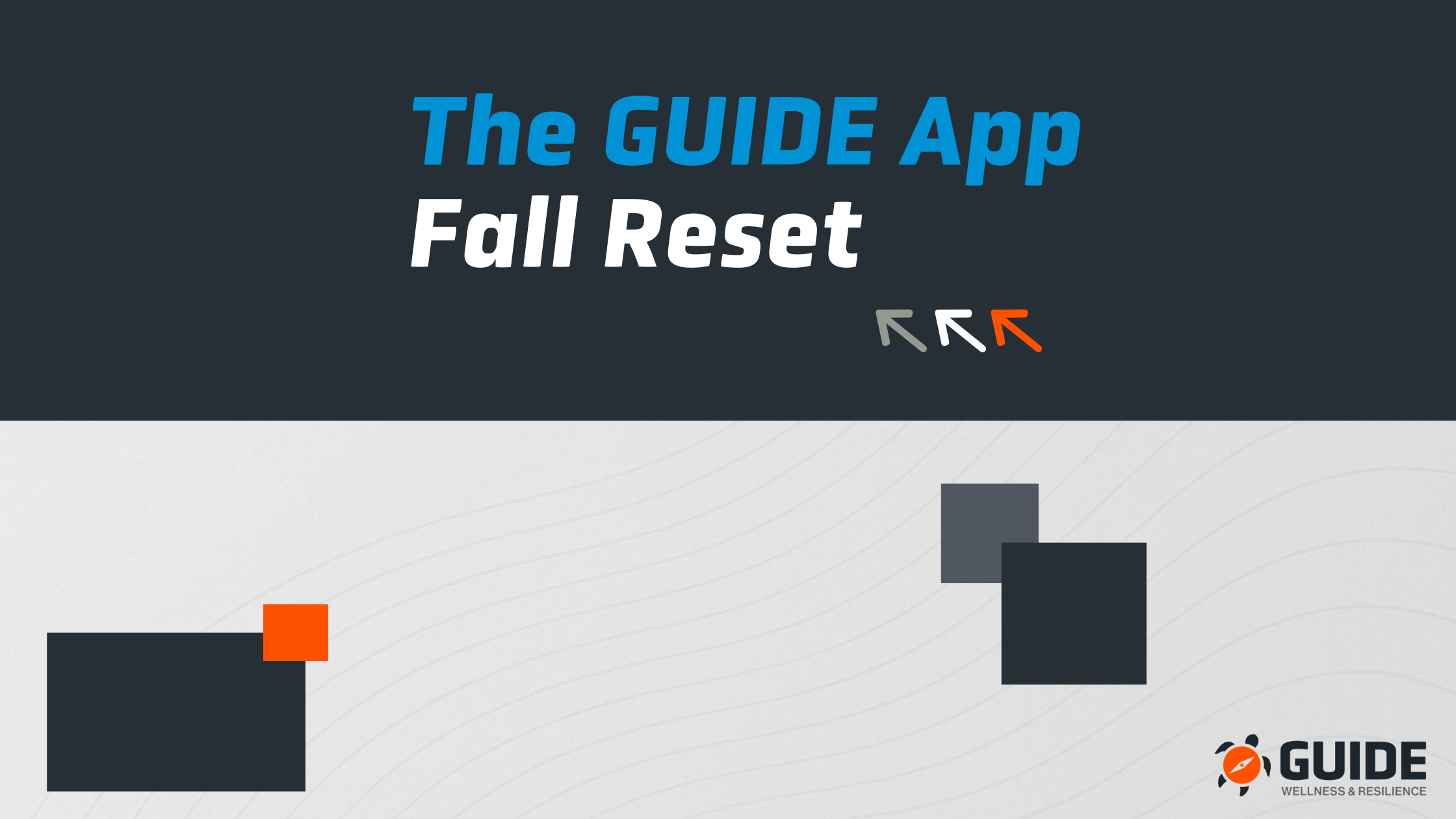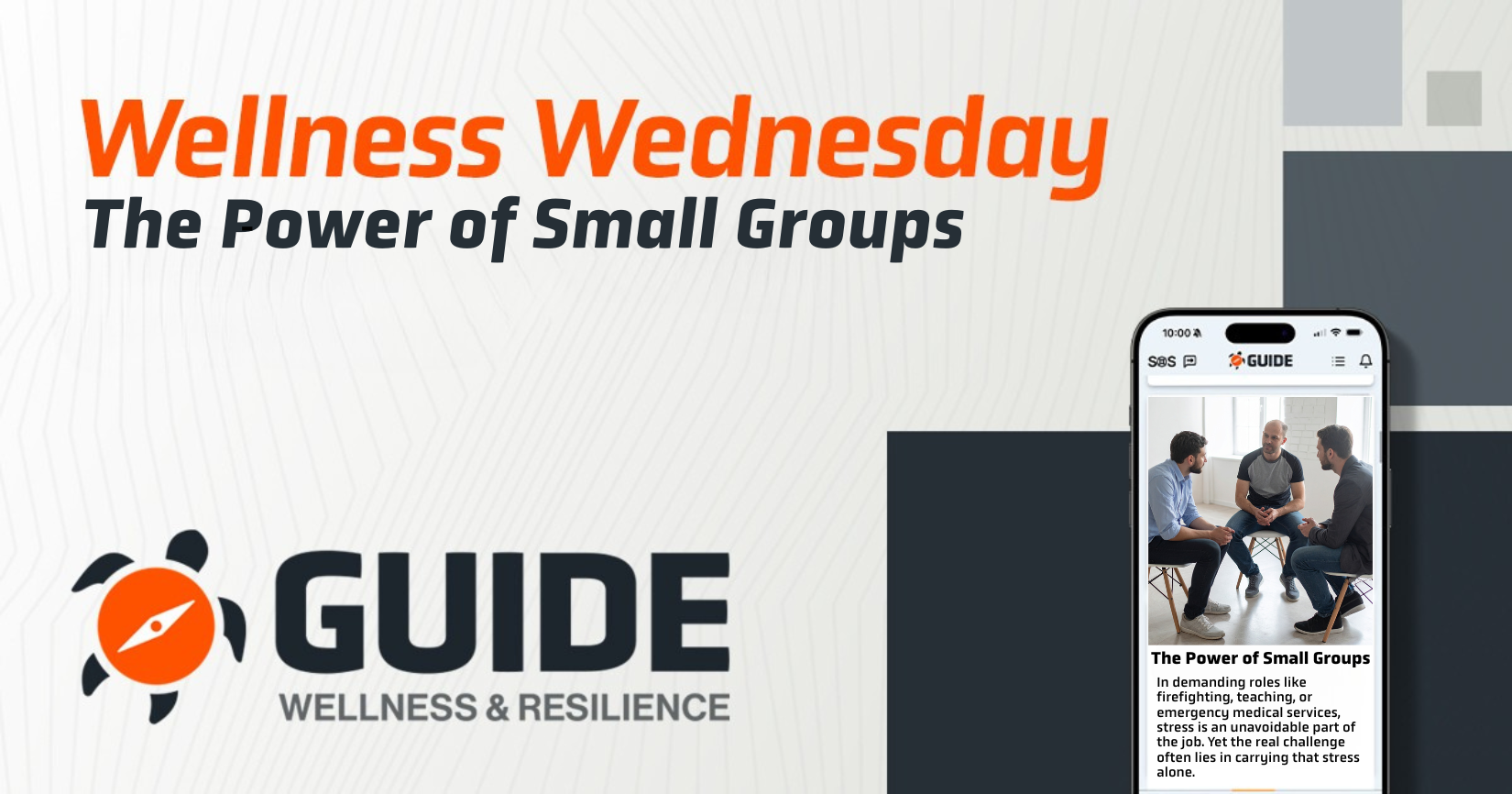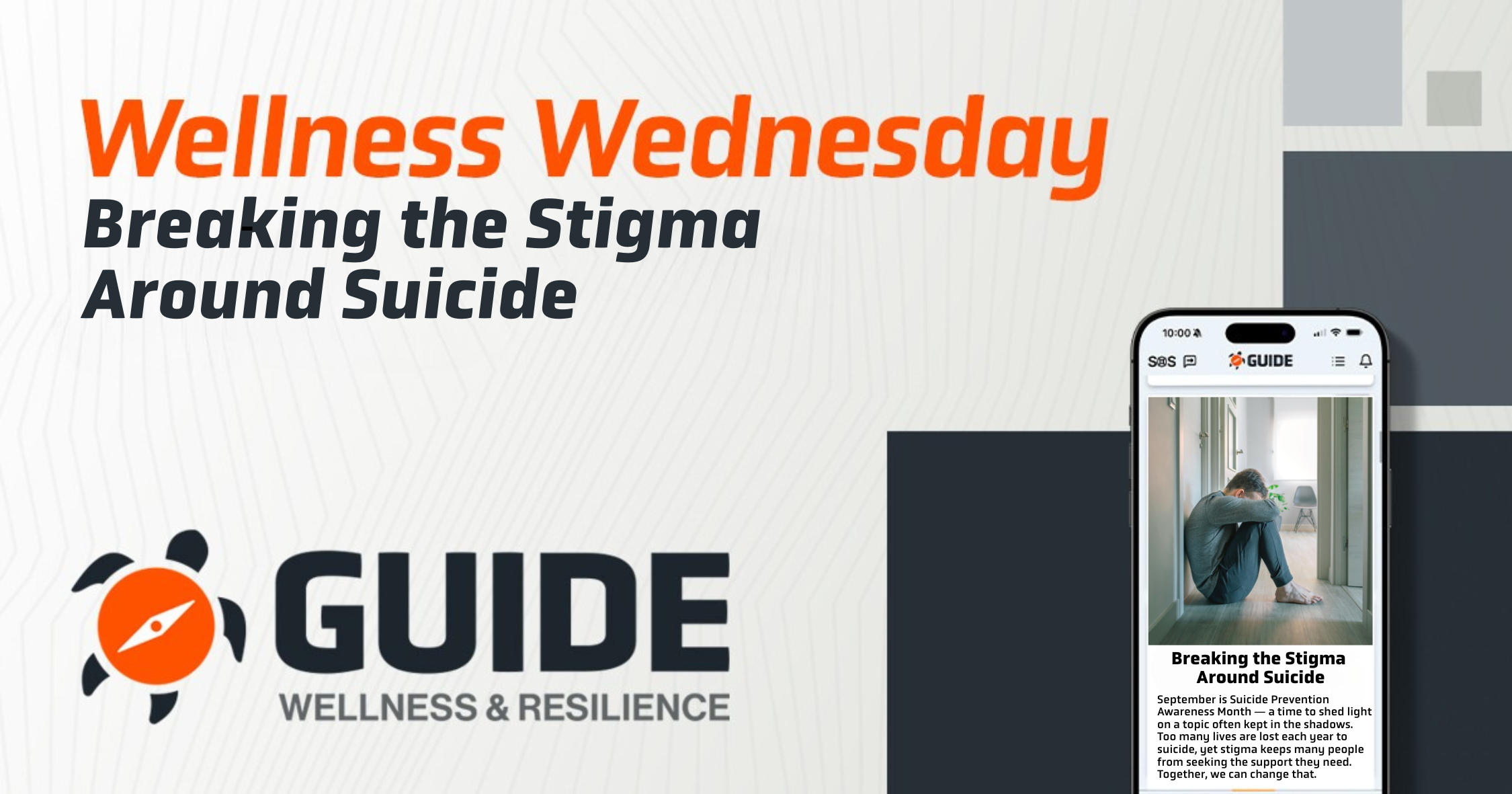We like to think we know people. Especially in this line of work. When you have spent enough time on the frontlines, whether in fire, EMS, or law enforcement, you start to believe you can read a room faster than anyone else. You can tell who is panicking, who is about to make a bad call, and who is holding it together by a thread. You develop instincts for chaos, for pain, for danger. But the longer you do this job, the easier it becomes to miss what is underneath the surface. You learn to see everything except what people do not show you. The hardest skill in the fire service, and maybe in life, is not reading a scene. It is reading someone’s perspective. Most of us were not trained for that. We were trained to respond, not to reflect. But reflection, the ability to pause, to look past your own point of view, and to imagine what someone else might be feeling, is the foundation of true resilience. Empathy is not softness. It is operational awareness on a human level.
Wellness Starts on the Frontline
It is easy to think of wellness as something that happens after the job. Something you tend to when the smoke clears and the pager quiets down. But empathy, perspective, and emotional awareness are frontline skills. They shape how we communicate with our crews, how we make decisions under stress, and how we lead our people when the pressure is on. The strongest teams in the firehouse are not just technically sharp. They are emotionally tuned. They do not mistake silence for strength or frustration for defiance. They notice. They ask. They listen.
How Perspective Changes Everything
In a firehouse, perspective is everything. Take the rookie who freezes on their first bad call. To a seasoned firefighter, that might look like weakness. But from the rookie’s perspective, it is the first time they have seen something that will stay with them for life. Or consider the captain who snaps during morning lineup, not because they are angry, but because they have been up since 3 a.m. juggling reports, staffing gaps, and a call that went sideways. Perspective shifts the story. The same scene can look like failure, fatigue, or fight depending on where you are standing. Wellness begins when we start noticing that difference.
Emotional Intelligence as Leadership Strength
In a culture built on toughness and precision, empathy can feel like a luxury. But the data says otherwise. Research from the National Fire Protection Association and the International Association of Fire Chiefs increasingly points to emotional intelligence as a key predictor of leadership effectiveness and crew cohesion. Teams led by emotionally aware leaders report higher morale, fewer conflicts, and greater trust. That trust is not abstract. It is tactical. It keeps communication open under pressure and reduces the risk of breakdowns in the heat of a call. When leaders learn to understand perspectives different from their own, they stop reacting to behavior and start responding to causes. They stop asking “what is wrong with you?” and start asking “what is happening to you?”
Training the Mind Like a Muscle
That shift does not happen overnight. Perspective-taking is like any other skill. It needs practice. It is not about sympathy or pity. It is about pattern recognition. The same way we train our brains to spot fire behavior, we can train them to spot emotional behavior. When someone withdraws, overreacts, or shuts down, those are cues, not character flaws. They are the smoke before the burn. Developing that awareness keeps our crews safer and our culture healthier.
The Role of Reflection and Mental Fitness
The challenge is that most first responders were never given the space or the tools to do that kind of reflection. We are trained to manage crisis externally, not internally. But the mind operates like a scene. It has hotspots, triggers, and warning signs. Ignoring them does not make them disappear. It just lets them spread quietly until something breaks.
The GUIDE App: A Tool for Real-World Resilience
This is where perspective meets technology in a powerful way. The GUIDE App was built for the realities of frontline work, for people who need wellness tools that fit their schedule, their mindset, and their world. Inside the app are resources that help users build mental fitness and perspective-taking in small, practical ways. Interactive modules, guided reflections, and resilience trainings teach first responders how to identify thought patterns, manage stress reactions, and communicate more effectively with their teams. These are not abstract lessons. They are built around real-world scenarios drawn from the experiences of first responders themselves. They remind users that everyone in uniform carries a different weight, and that wellness is not one-size-fits-all.
Redefining Strength and Team Culture
Empathy in the fire service does not mean lowering standards. It means raising the bar for understanding. It means recognizing that mental strength is collective, not individual. A firehouse thrives when every person feels seen, respected, and supported. That starts with awareness, of your own stress, your crew’s signals, and the unspoken culture that shapes how you all show up. Perspective is the difference between command and leadership, between compliance and trust. It is what transforms a group of responders into a team.
The Changing Culture of Fire Service Wellness
The culture of the fire service is shifting, slowly but surely. Where wellness used to be seen as weakness, it is now being recognized as readiness. Departments across the country are adopting proactive mental fitness programs, peer support initiatives, and tools like The GUIDE App to build resilience from the inside out. The more we talk about perspective, the more we realize it is not a “soft” skill. It is survival. A chief who understands their crew’s mental load makes better calls under stress. A medic who can interpret a partner’s silence can prevent burnout before it spirals. Perspective saves careers, relationships, and lives.
Building Trust Through Compassion
There is another layer to this conversation, how we see the public we serve. Every call we run involves people in crisis, often at their worst moment. Developing perspective does not just strengthen the team internally. It improves how we show up externally. The firefighter who can step into the perspective of a frightened parent, a disoriented senior, or a person battling addiction brings compassion into situations that could otherwise escalate. Compassion, grounded in perspective, turns reaction into response. It builds trust with the community. And that trust, once earned, becomes the foundation of every effective department.
Understanding Context to Reduce Conflict
Perspective-taking does not mean agreeing with everyone or excusing behavior. It means understanding context. It is about seeing what is driving the surface reaction. Maybe your colleague is not “checked out” but overwhelmed. Maybe the citizen who is yelling is not angry at you but terrified of what is happening. When you widen your lens, the world changes shape. So does your stress. Many of the most draining conflicts in public safety stem not from malice but misunderstanding. Perspective bridges that gap.
Performance and Retention
From an operational standpoint, this skill translates directly to performance. Studies from the American Psychological Association show that workplaces with high empathy scores experience 40 percent fewer interpersonal conflicts and higher retention rates. For first responder agencies, that is not just a morale boost. It is mission-critical. A department that can hold both accountability and empathy at once is one that can evolve, adapt, and thrive. That is what modern leadership looks like.
The Future of Readiness Is Emotional Adaptability
Fire service leaders are beginning to understand that the future of readiness is not just about equipment or training hours. It is about emotional adaptability. Leaders who can read a room, feel the pulse of their team, and respond to invisible stressors create cultures of sustained resilience. They normalize reflection as part of the work, not a reaction to burnout. They make it safe to say, “I am struggling,” and even safer to respond, “Me too.”
Making Reflection Part of the Routine
In that environment, perspective becomes contagious. When one person starts to listen differently, others follow. A station that once brushed off conversation about stress now has open check-ins. A shift that used to trade jokes about “sucking it up” now talks openly about healthy coping. The GUIDE App was designed to help catalyze that shift, to make wellness part of the rhythm of daily life instead of an afterthought. Its tools are short, actionable, and confidential, allowing responders to process stress in real time, not weeks later when it has hardened into something heavier.
Human Connection as the Core of Wellness
One of the most powerful features of The GUIDE App is its focus on human connection. It does not just offer static content. It connects members of small groups and teams through guided discussions and perspective-sharing prompts. Users can explore topics like communication under pressure, navigating grief, or supporting peers through tough calls, all within a secure, judgment-free space. Those micro-moments of reflection ripple outward, reshaping how teams talk, think, and support each other. When you build understanding, you build strength.
The Strategic Power of Empathy
The concept of seeing through someone else’s eyes is not sentimental. It is strategic. It is the key to breaking cycles of miscommunication, mistrust, and burnout. It is what transforms command into connection and procedure into purpose. A crew that can see each other clearly will move as one, think as one, and recover as one. That is operational wellness in action.
Awareness as the First Step
The truth is, every firefighter, medic, and officer is carrying something unseen. You cannot know what someone else’s shift has been like until you stop long enough to ask. That pause, that single moment of awareness, is where wellness starts. The GUIDE App was created to make that pause a habit, not a hope. It helps users step outside themselves, reflect, and return to their roles stronger, steadier, and more self-aware.
Leadership Built on Understanding
The best leaders in this profession are not the ones who shout the loudest or push the hardest. They are the ones who see the farthest. They see the individual behind the uniform. They recognize that service and self-awareness are not opposites. They are allies. They know that by understanding their people, they lead them better. By understanding their own perspective, they show up better.
Readiness Begins With Awareness
Becoming aware of other people’s perspectives is not just a moral choice. It is a tactical advantage. It makes us better teammates, better leaders, and better humans. The next generation of fire service culture will be defined not by how well we endure, but by how deeply we understand. Wellness is not only about recovery. It is about readiness. And readiness begins with awareness.
If your department is ready to build that culture, one rooted in understanding, resilience, and real human connection, it starts with a conversation. The GUIDE App was built for this moment, where mental fitness meets leadership, and where perspective becomes power.
Book a demo today to see how The GUIDE App can help your team strengthen from within, one perspective at a time.




